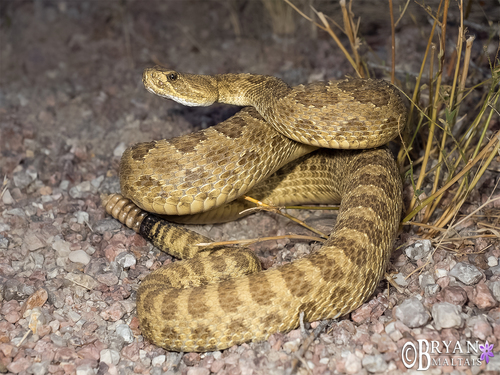
Prairie Rattlesnake
The prairie rattlesnake, Crotalus viridis, slithers through North American grasslands, its rattle a warning symphony. Equipped with venomous fangs and heat-sensing pits, it masterfully controls rodent populations, showcasing nature's delicate balance. An icon of survival, it's a testament to adaptation and ecological harmony.
Length: 91 - 152 cm
Size
Brown, Grey, Green
Color
Low
Aggression
3 mph
Top Speed
Least Concern
Conservation Status
Stable
Population Trend
Characteristics
Crotalus viridis, commonly known as the prairie rattlesnake, inhabits grasslands and shrublands across North America. This venomous pit viper is known for its distinctive rattle and heat-sensing pits. It plays a crucial role in controlling rodent populations and has a unique defensive behavior of vibrating its rattle to warn off threats.
Distribution Range of the Prairie Rattlesnake
Crotalus viridis, commonly known as the prairie rattlesnake, is native to North America. Its geographical distribution includes the western United States, southwestern Canada, and northern Mexico. Specifically, it can be found in states such as Montana, Wyoming, Colorado, South Dakota, Nebraska, and Arizona, as well as in the Canadian provinces of Alberta and Saskatchewan. In Mexico, it inhabits northern regions like Sonora and Chihuahua.
Prairie Rattlesnake's Habitat
Environmental Conditions
The prairie rattlesnake typically inhabits semi-arid environments such as grasslands, prairies, and scrublands. It is also found in rocky hillsides, open forests, and desert environments. The climate in these regions varies from temperate to arid, with hot summers and cold winters. The species tends to prefer areas with abundant cover, such as shrubs, burrows, or rocky crevices, which provide shelter and hunting grounds.
Ecological Niche
Crotalus viridis occupies the ecological niche of a mid-level predator, primarily preying on small mammals such as rodents, birds, and occasionally amphibians. Its presence in the ecosystem helps control the population of these prey species. The snake is adapted to a range of environmental conditions and can be found at elevations from sea level up to 3,300 meters. Regional adaptations may include variations in coloration and patterning to better blend with local environments.
Copyright @ Nature Style Limited. All Rights Reserved.
 English
English